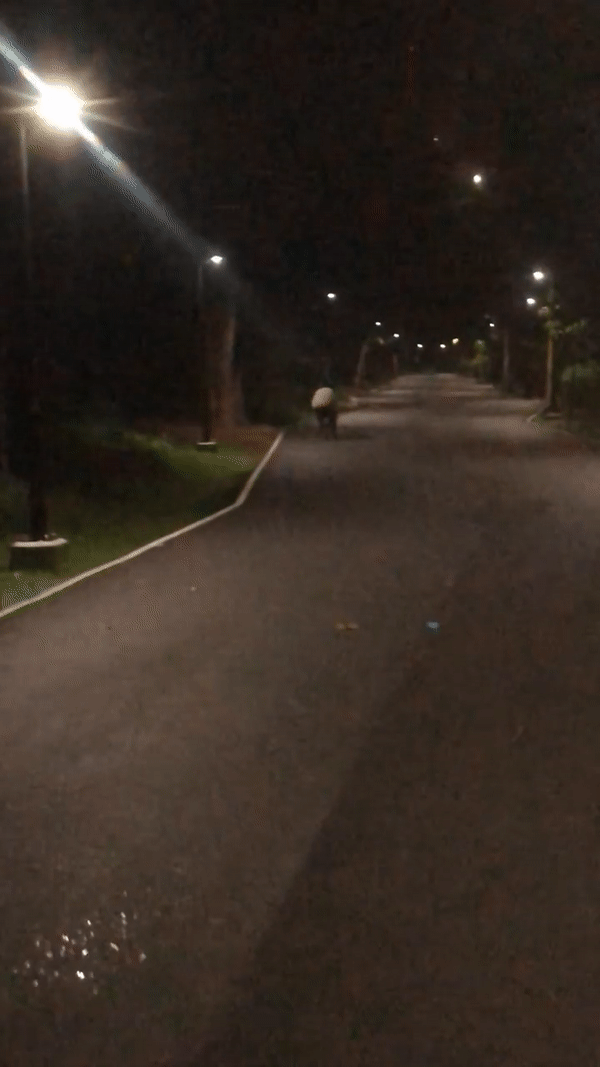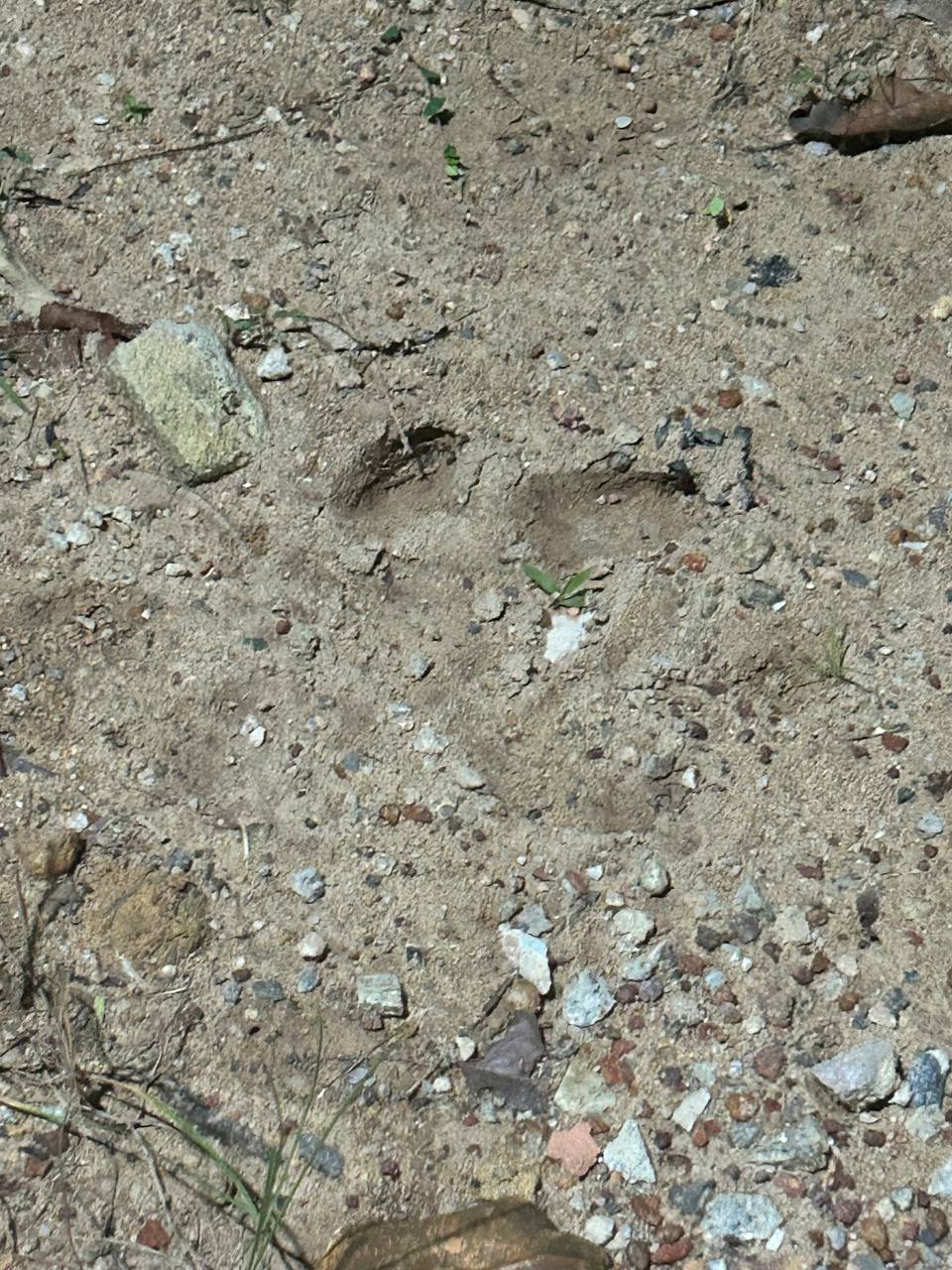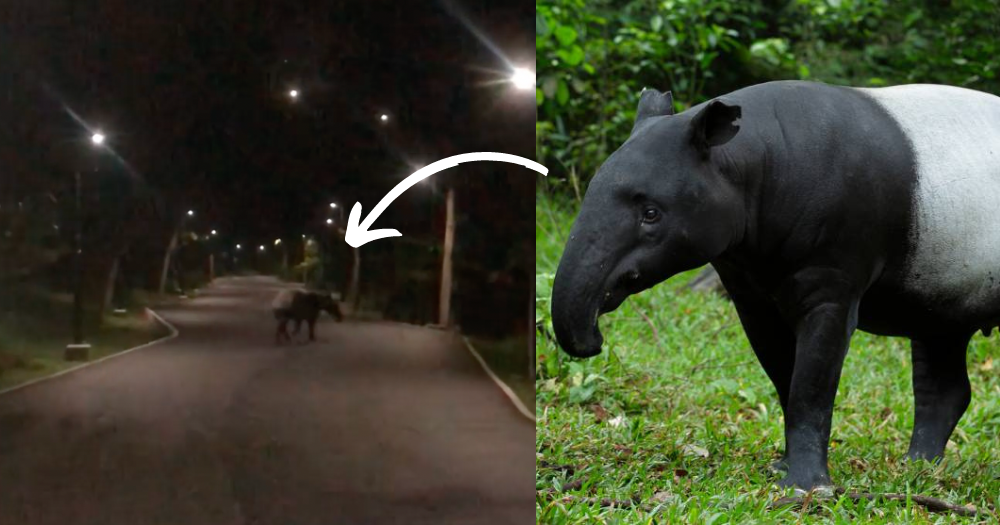The last time a wild Malayan tapir was sighted in Singapore was seven years ago at Changi.
That was the second time a tapir sighting was recorded in Singapore, other than one that was found dead in a quarry on Pulau Ubin in 1986, according to Singapore Biodiversity Record by the National University of Singapore.
Here's possibly the third record of a tapir in Singapore's history.
Tapir sighted in Punggol
A cyclist was extremely lucky to spot a Malayan tapir trotting at a park connector in Punggol at around 1am on Friday, Jul. 22.
He managed to take a video of the shy creature that has a distinct black and white coat pattern.
 Video by MC Wai.
Video by MC Wai.
Another individual supposedly spotted the same tapir in the late morning on Jul. 22, but no footage of that encounter was captured.
In the late night of Jul. 22, Mothership observed that NParks staff members were patrolling along the park connector where the sighting was reported.
 The hoof print of a recently sighted tapir. Photo by Zheng Zhangxin.
The hoof print of a recently sighted tapir. Photo by Zheng Zhangxin.
It is uncertain if the tapir has left Singapore, as of the time of writing.
NParks monitoring the situation
In response to Mothership, the Group Director of Wildlife Management at NParks Ryan Lee said that NParks is aware of the sighting of a Malayan Tapir at Punggol.
NParks staff are currently deployed on the ground to monitor the situation, he added.
"Sightings of the tapir in Singapore are rare. This may be the first tapir sighted on mainland Singapore since the last sighting of a tapir in Changi in 2016," Lee said.
Lee also advised members of the public to stay calm and quiet, and do not make any sudden movements, if anyone encounters the tapir.
Members of the public are advised not to approach or feed the animal. It is important to keep a safe distance from the wild animal and not to do anything that can provoke the animal such as using flash photography while taking photos.
"Members of the public should call the 24-hour Animal Response Centre at 1800 476 1600 to report any sightings of the tapir or for other wildlife-related issues," Lee added.
The co-CEO of Animal Concerns Research and Education Society (ACRES) Kalai Vanan also said that the tapir most likely swam across the straits from Malaysia, similar to the sighting in 2016.
Back in 2016, ACRES was alerted to the tapir that was spotted running along Changi Coast Road. The animal later entered back to the sea, Kalai added.
"We hope that the tapir will find its way back or that it will be repatriated back if it’s caught," Kalai added in response to the recent tapir sighting.
Good swimmer
Malayan tapirs are agile and fast swimmers.
There is no historical record of wild tapirs residing in Singapore so it is believed these tapirs were visitors from Johor.
They are such good swimmers making it highly possible for them to swim over to mainland Singapore directly from Malaysia. However, they could have also used nearby islands as pit stops.
More about tapirs
Described to be living fossils, tapirs have been around since the Eocene but all four species are now either endangered or vulnerable species due to habitat destruction or poaching.
They do resemble elephants, hippos or pigs but their close relatives are actually horses and rhinos.
Tapirs do not reproduce quickly as they only have one baby at one time and each pregnancy takes about 13 to 14 months, Tapirs Specialist Group said.
The Malayan tapir is the only species of tapirs found in Asia and it's the largest of all four species of tapirs.
They are considered to be an endangered species under the International Union for Conservation of Nature (IUCN) Red List of Threatened Species.
The Malayan tapir is also listed on CITES Appendix I, which means that international trade of any individuals of this species is generally prohibited.
The Malayan tapir is also an iconic animal of Malaysia even though it can be found in Indonesian island of Sumatra, southern Thailand and Myanmar.
Top image: Screenshot from MC Wai's video and via Mandai Wildlife Reserve
If you like what you read, follow us on Facebook, Instagram, Twitter and Telegram to get the latest updates.



